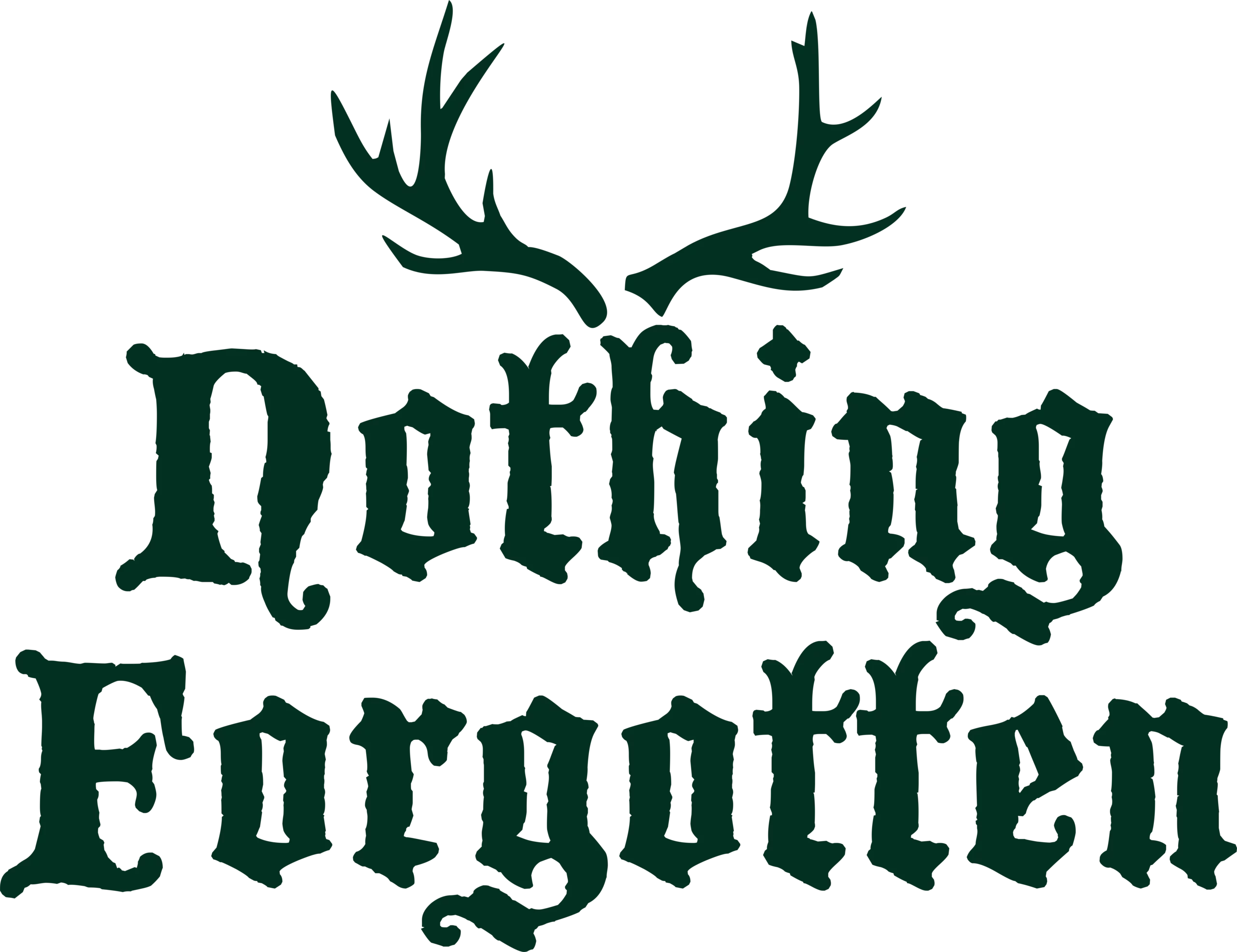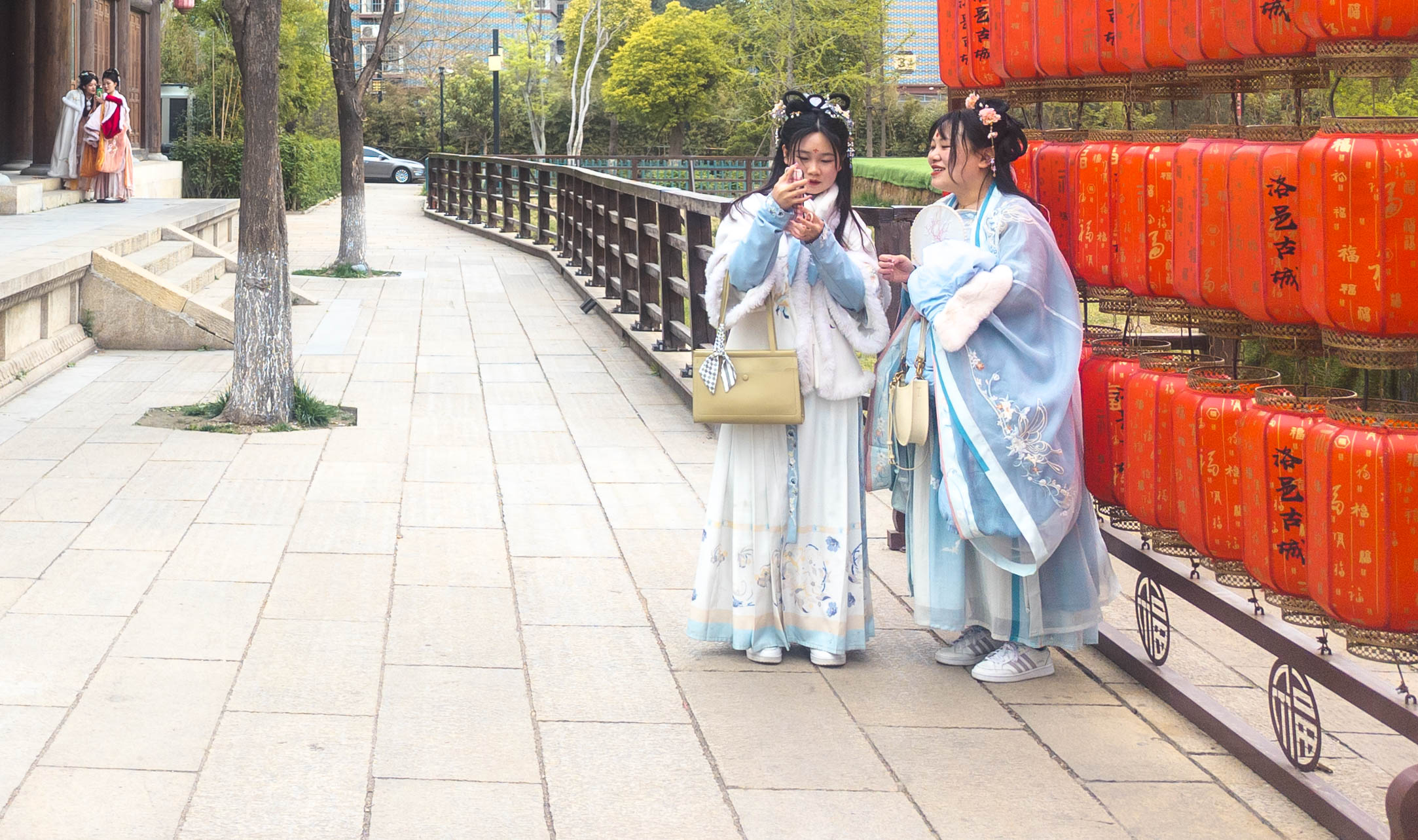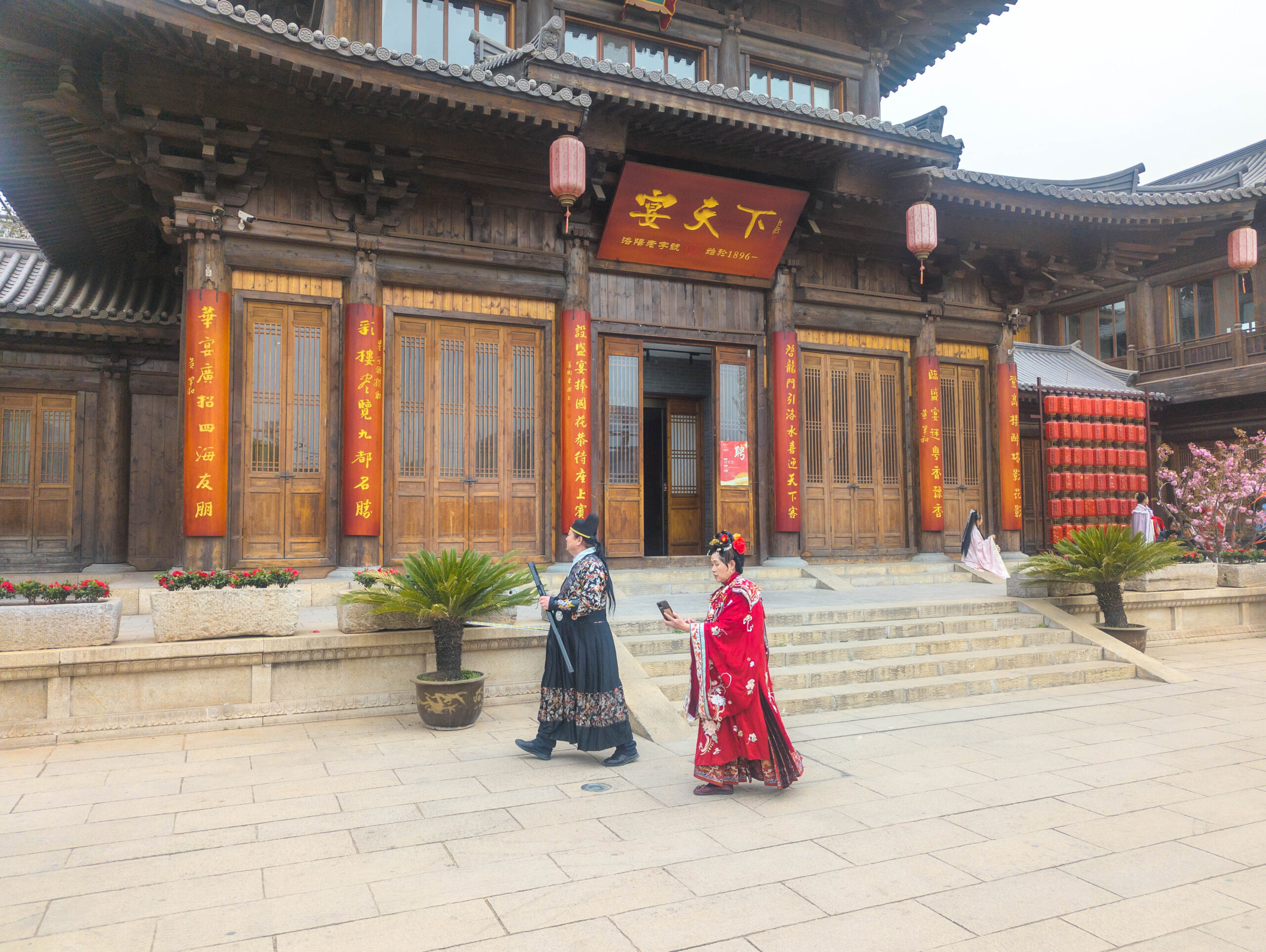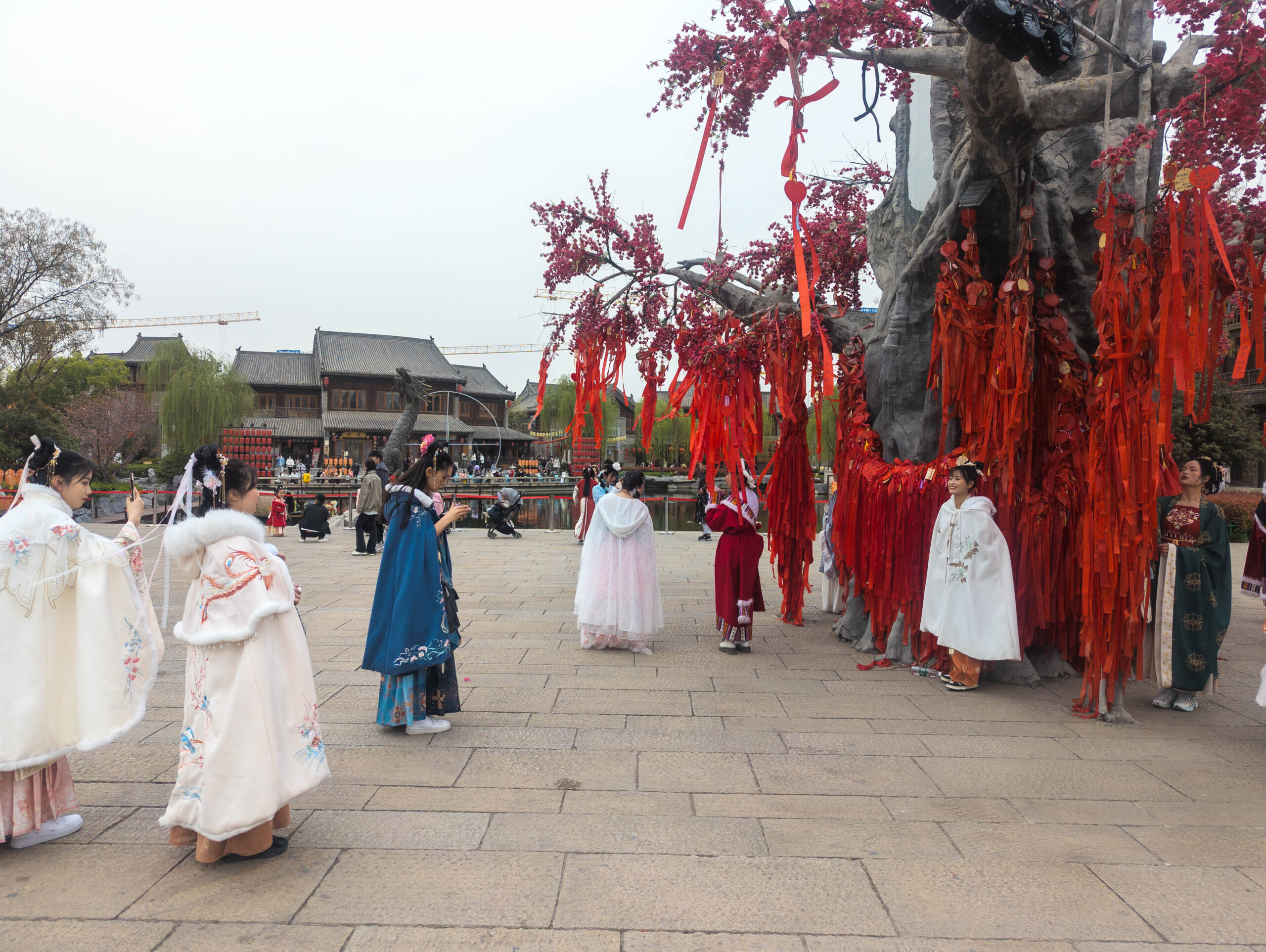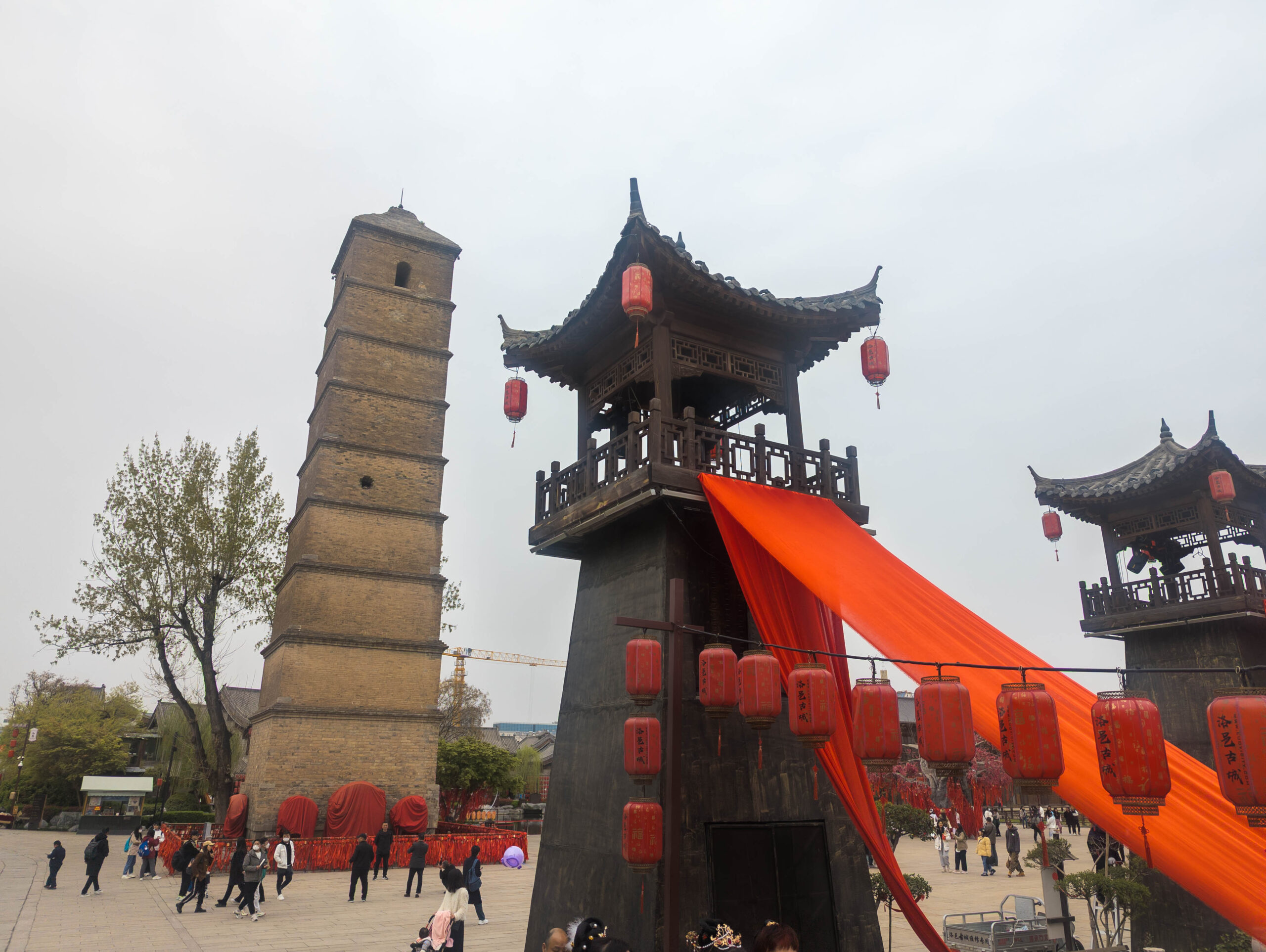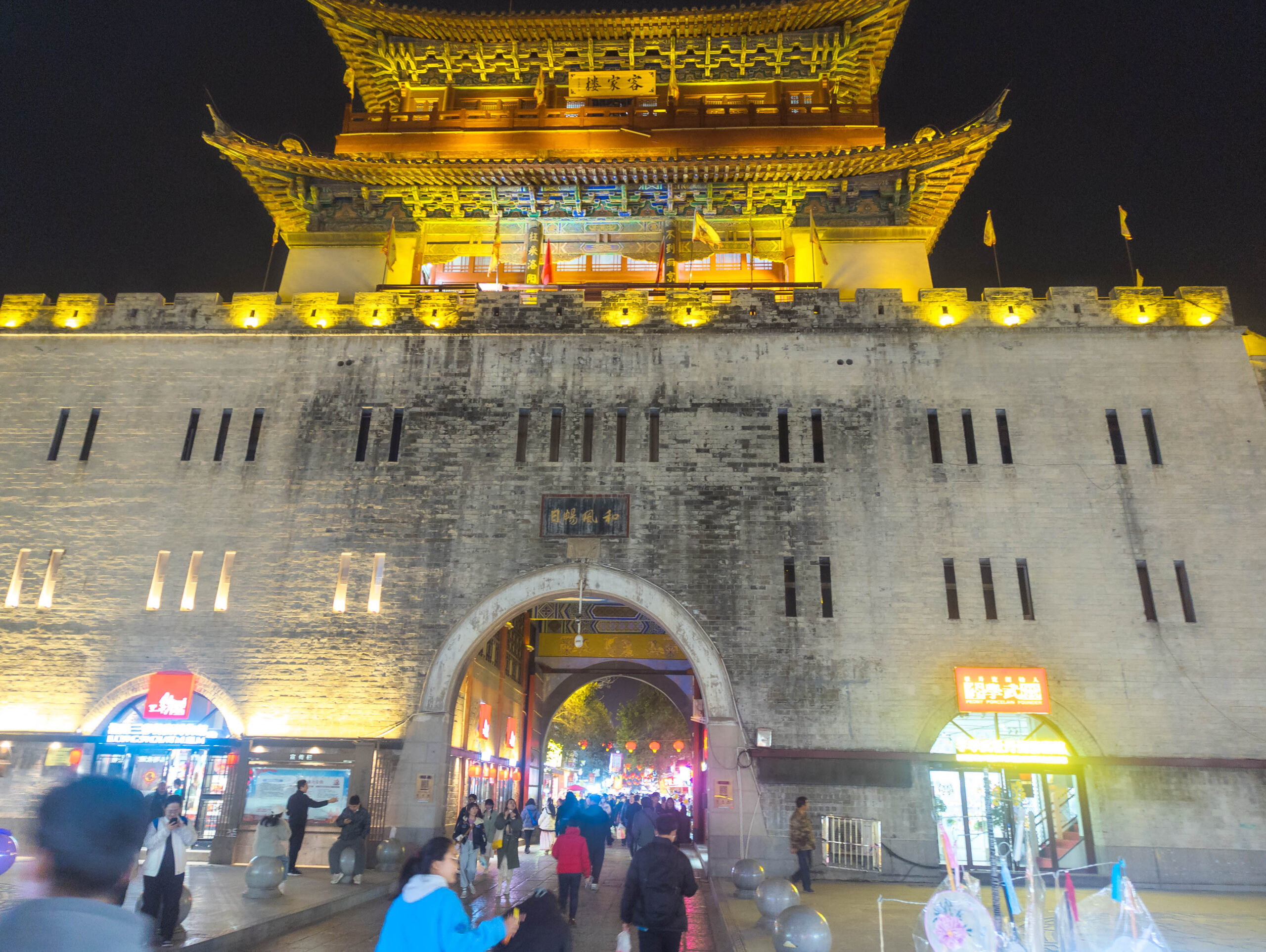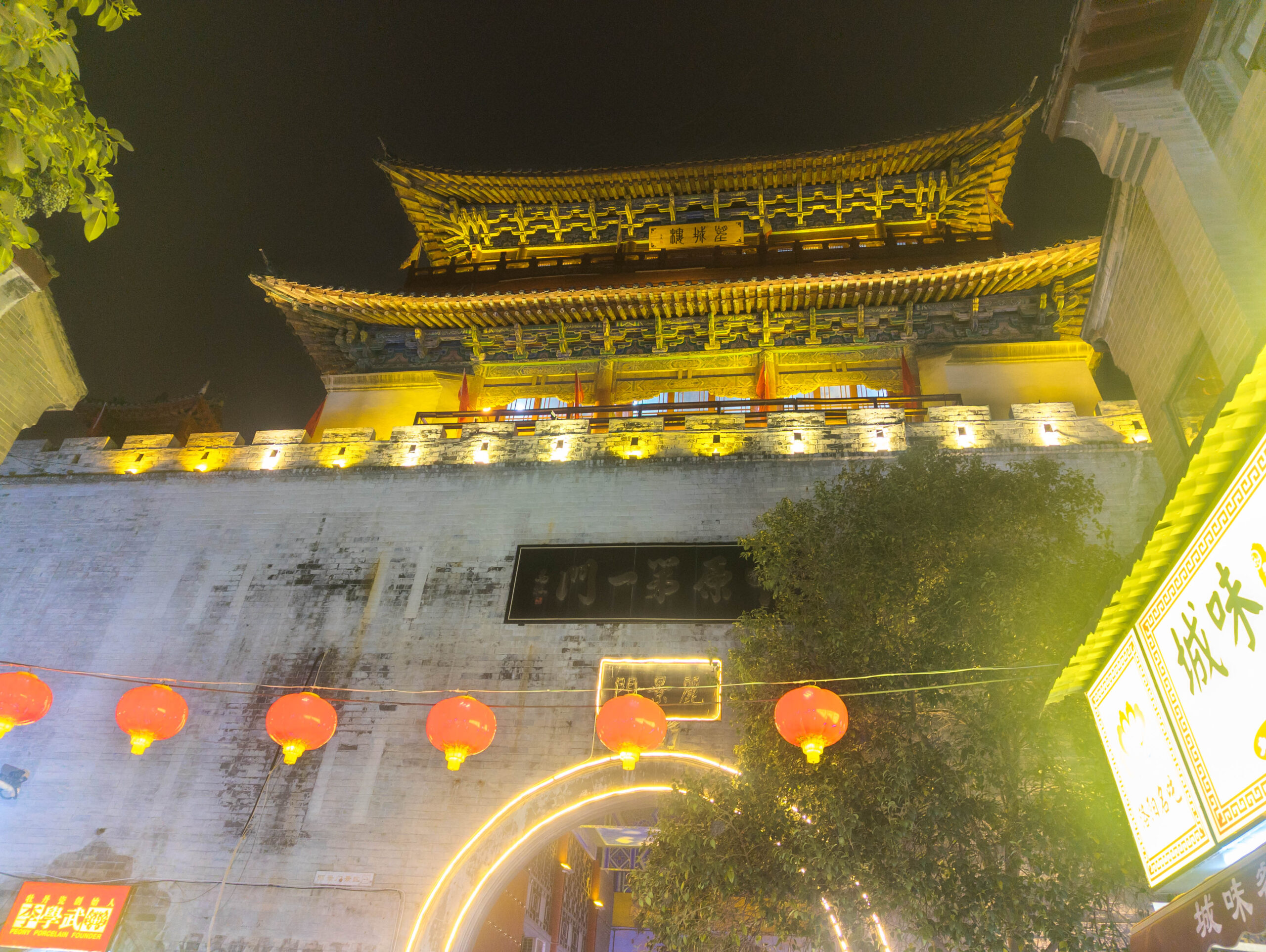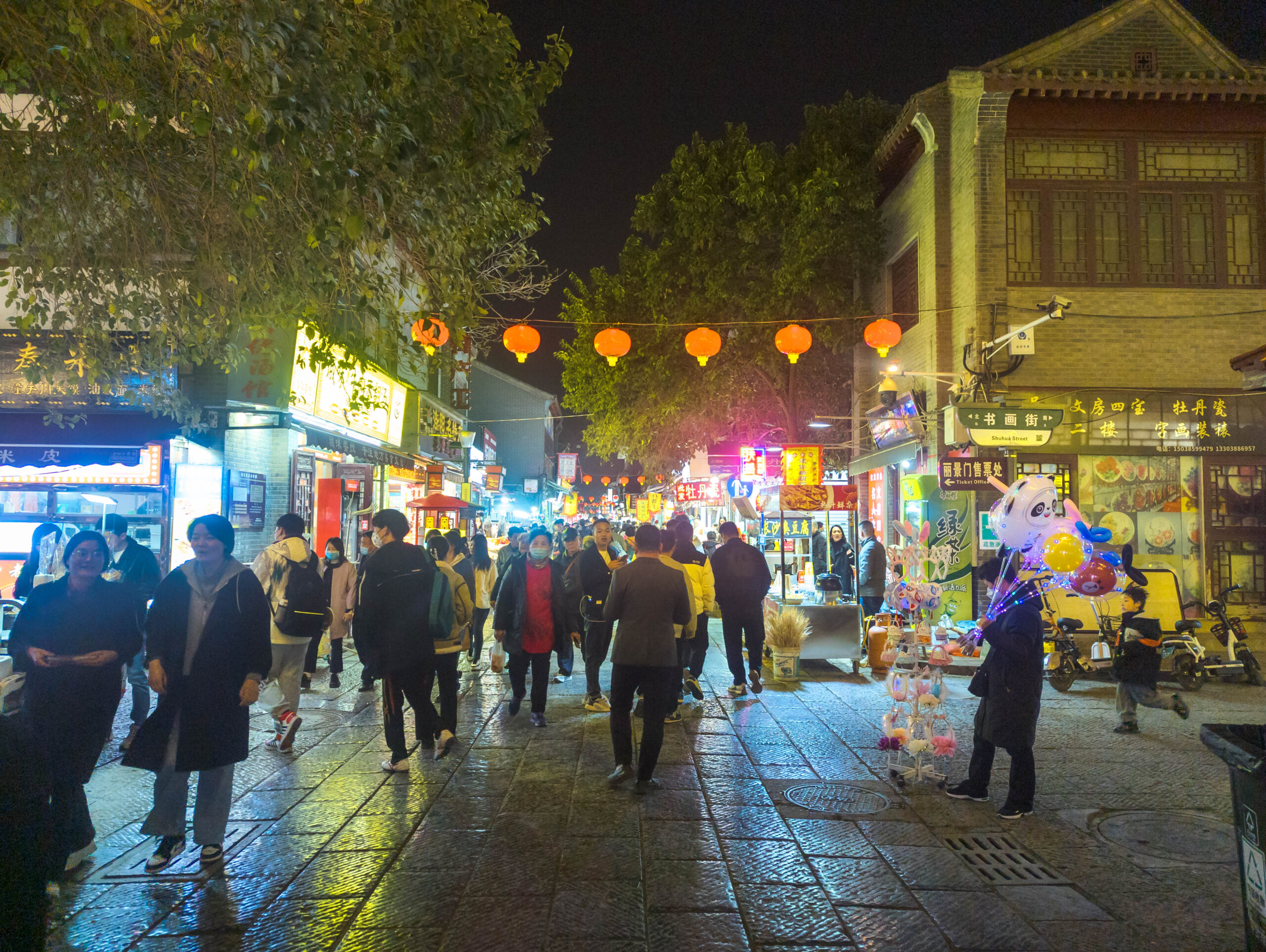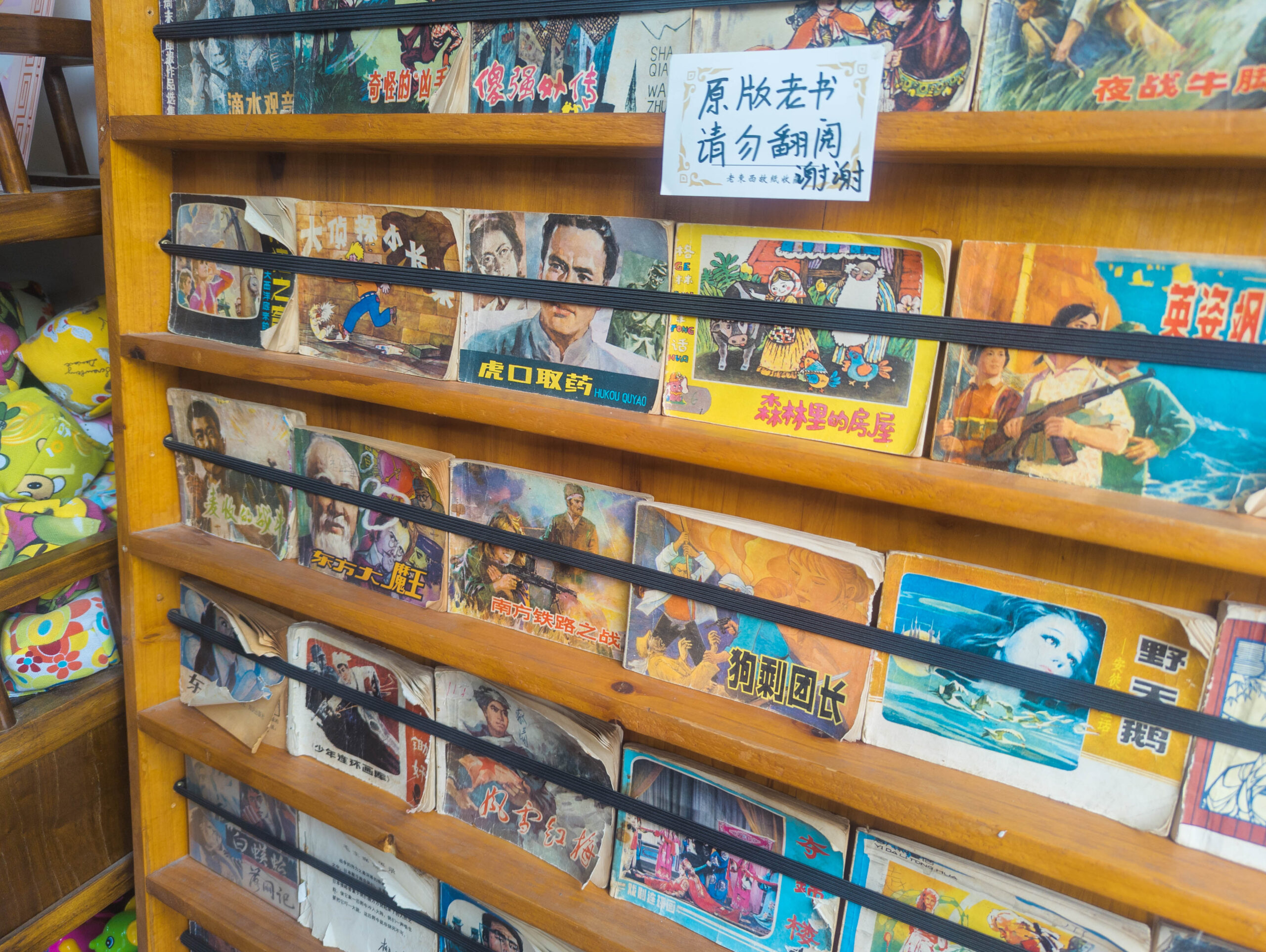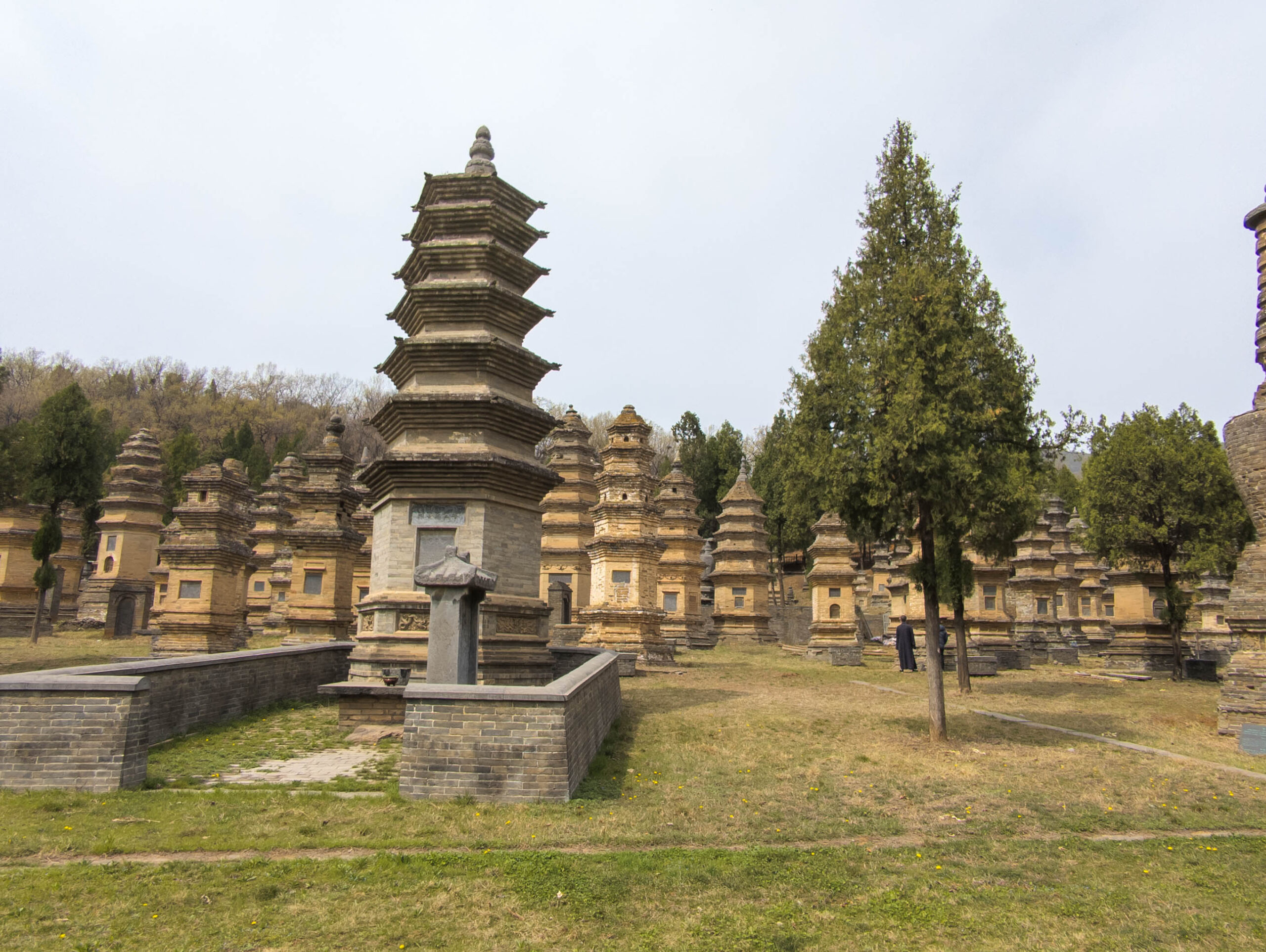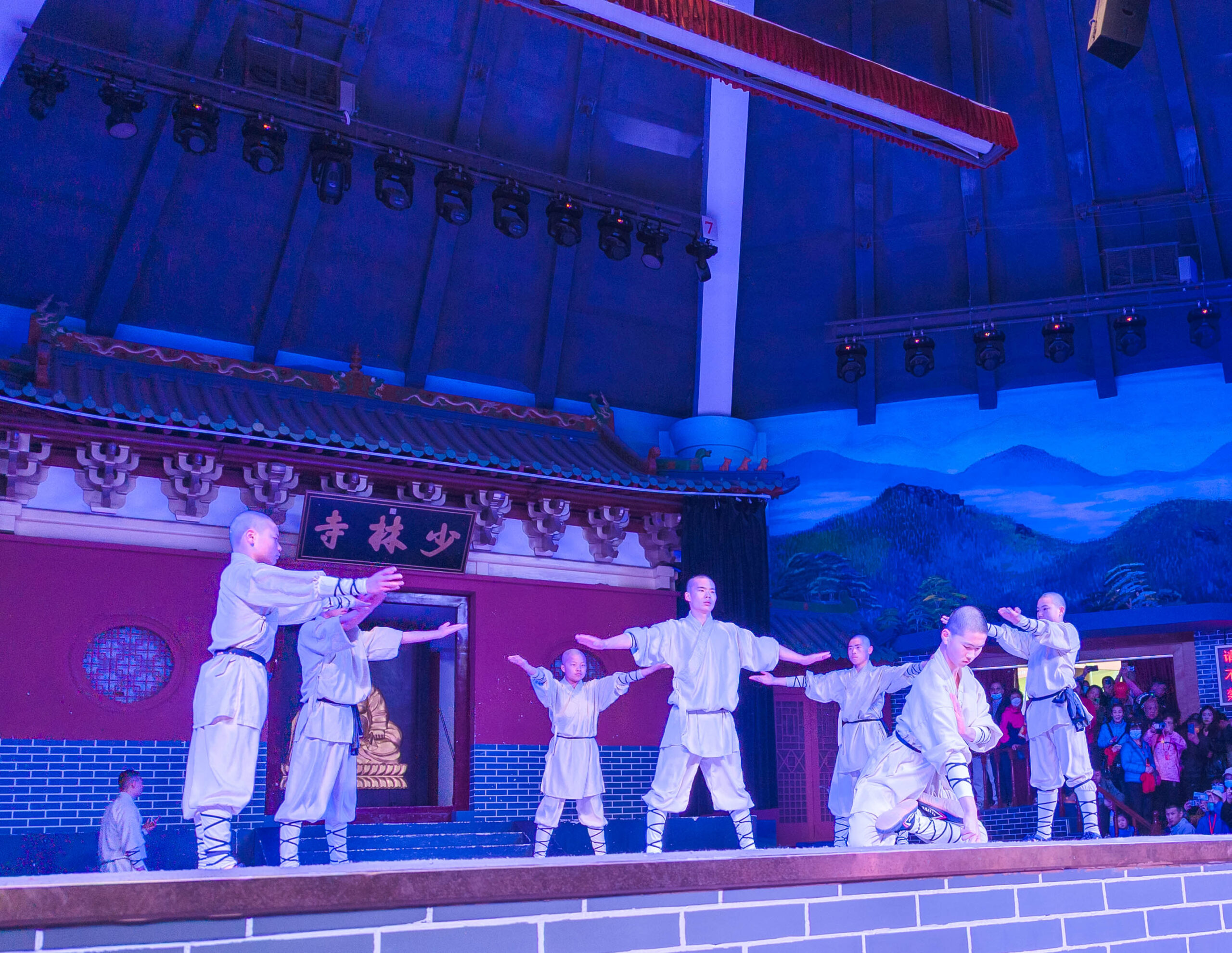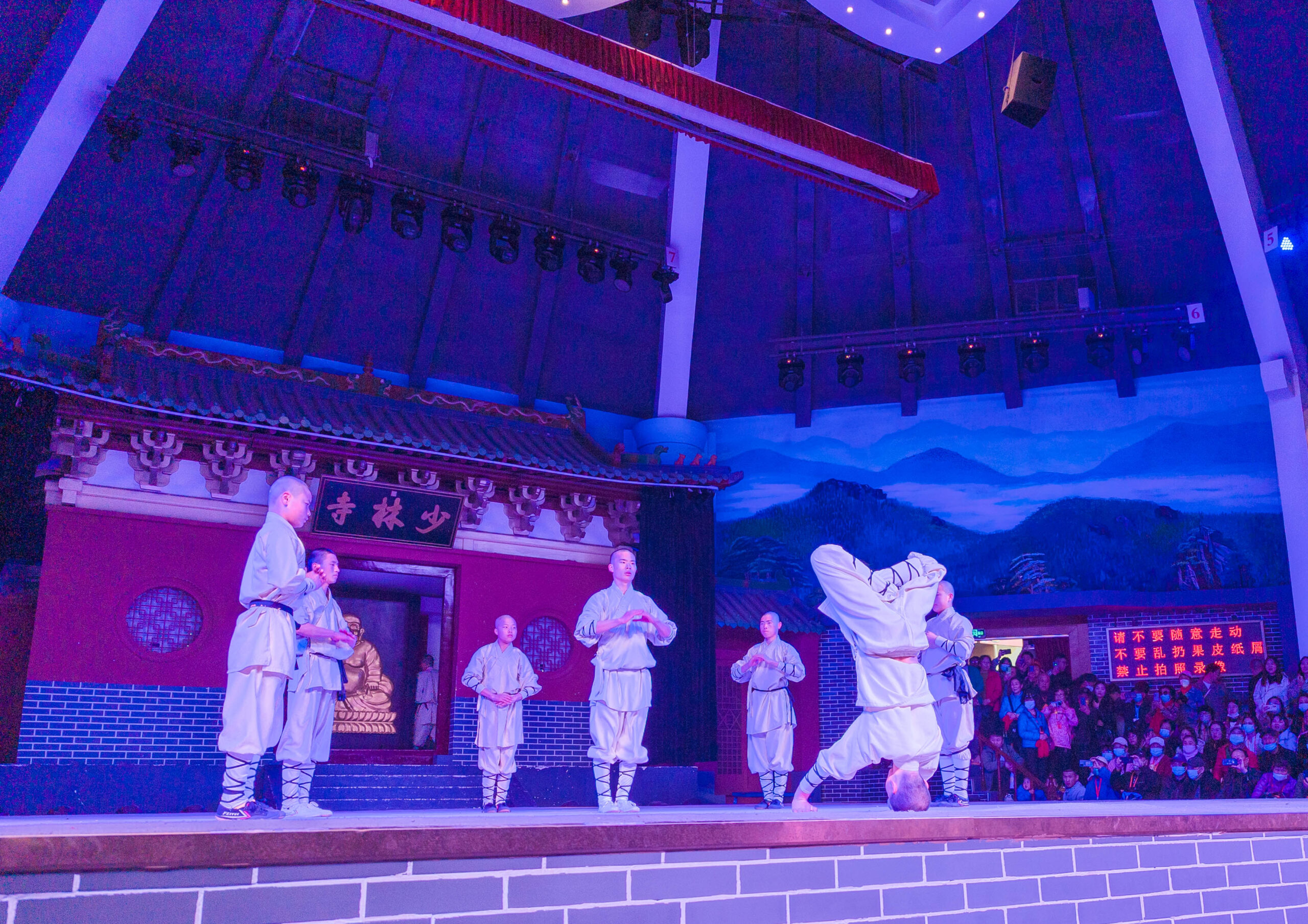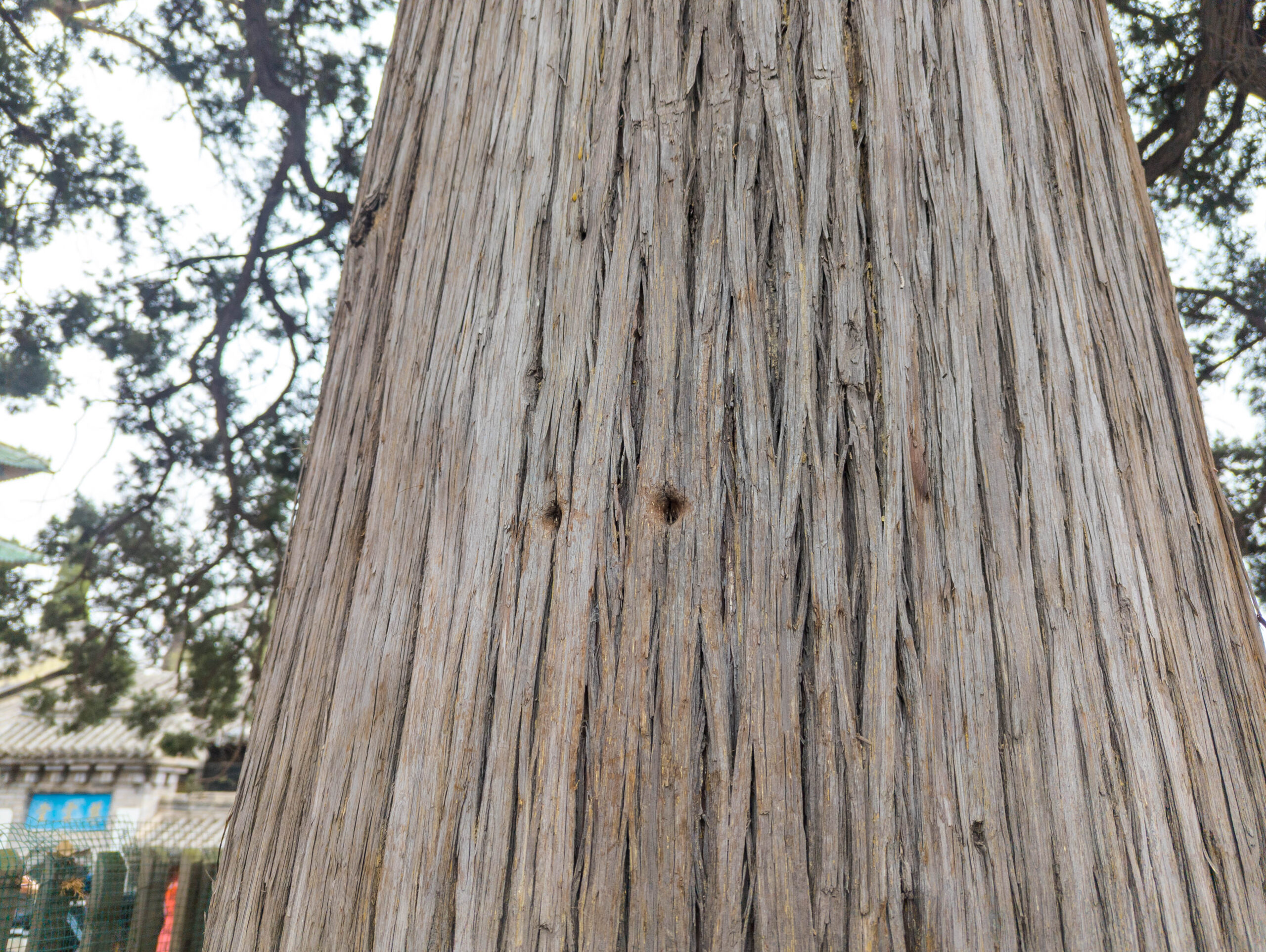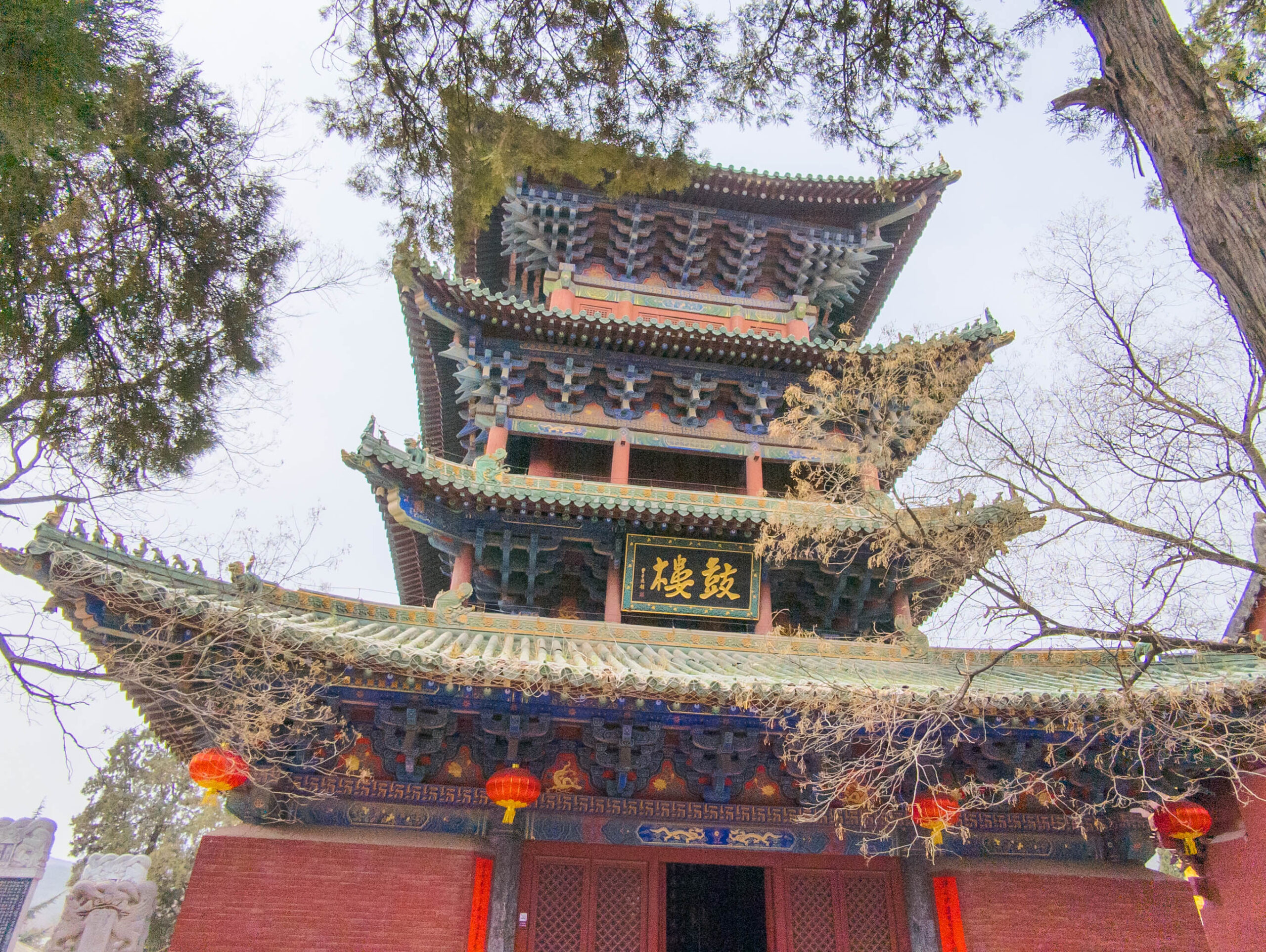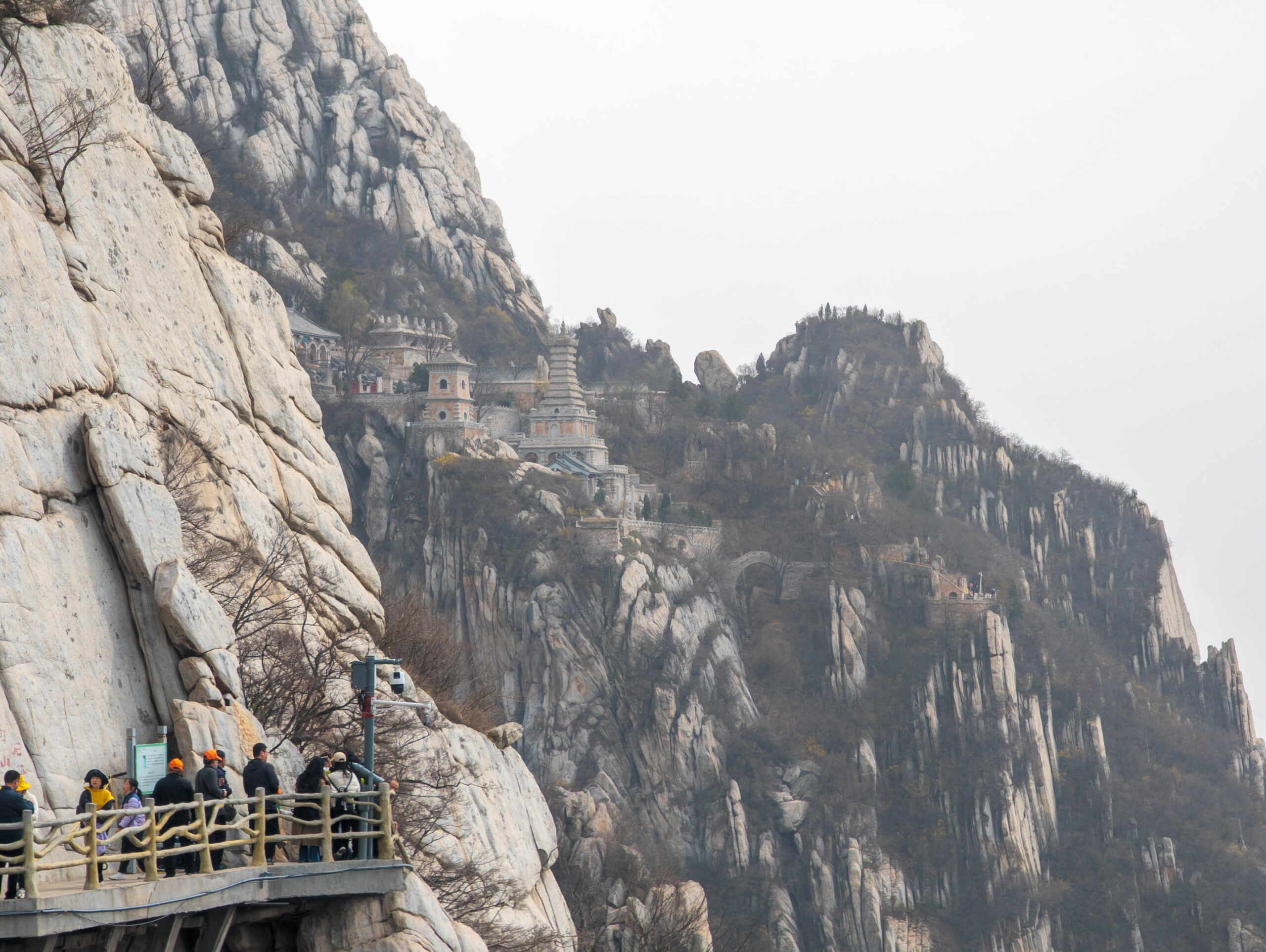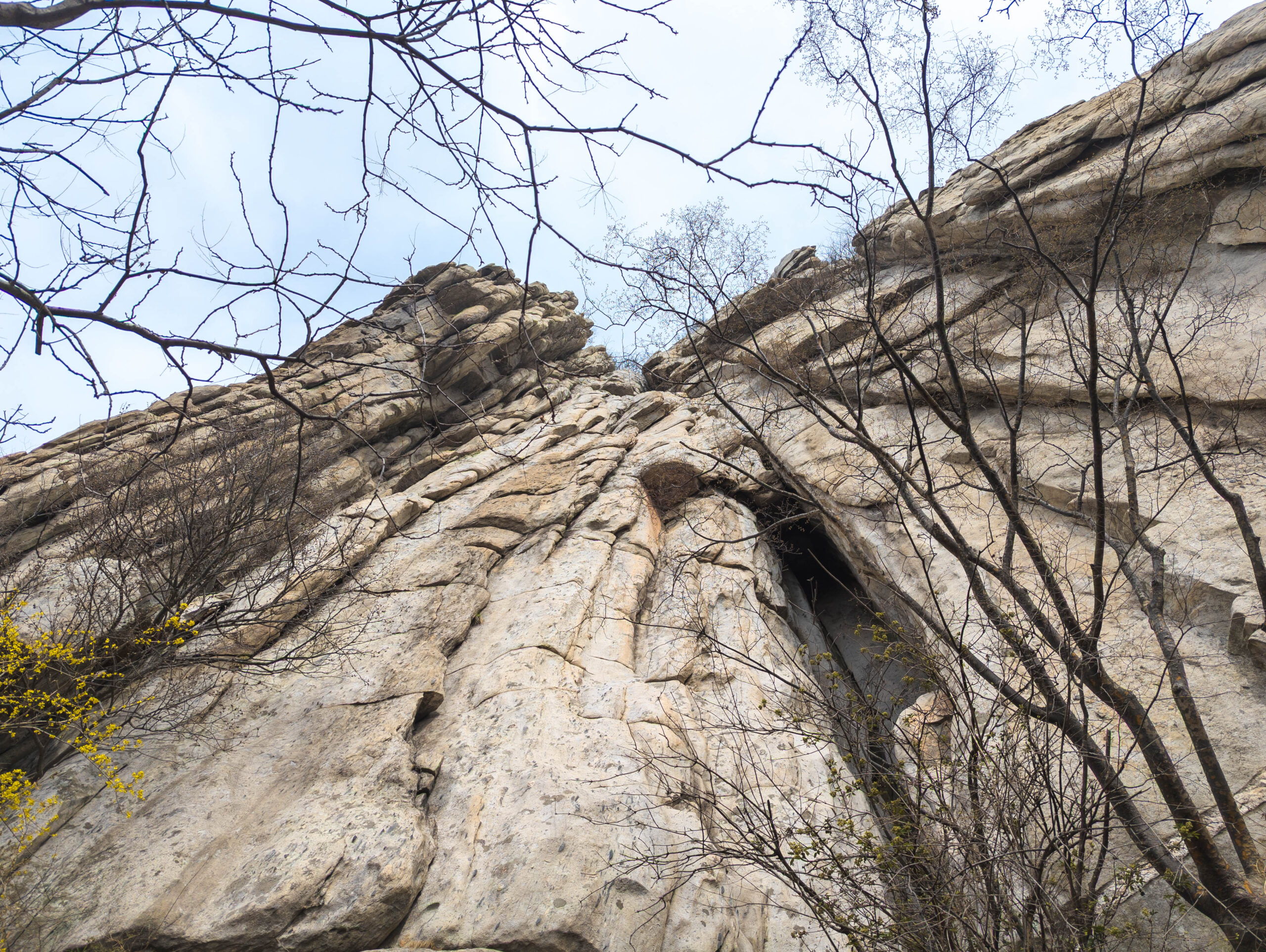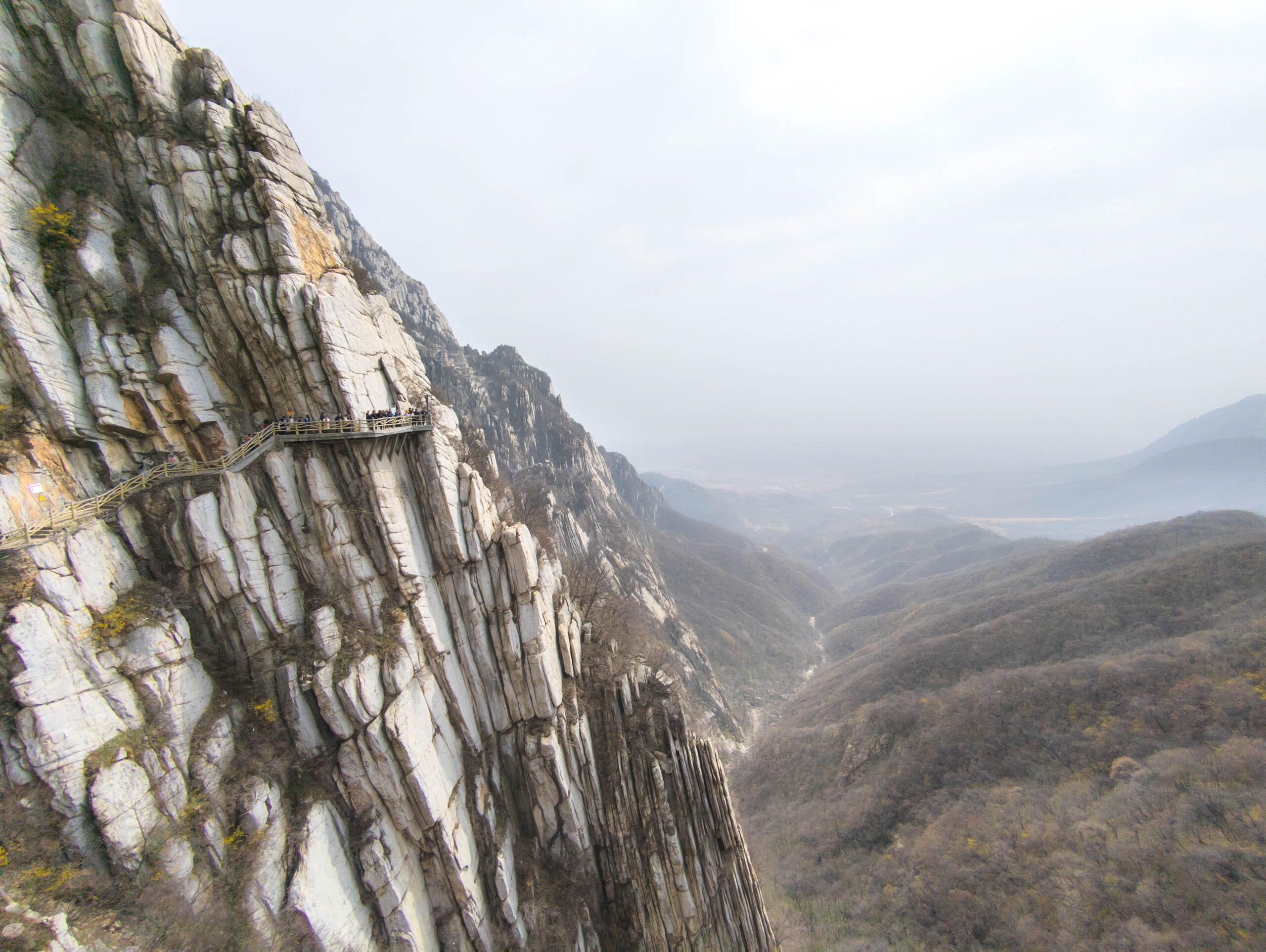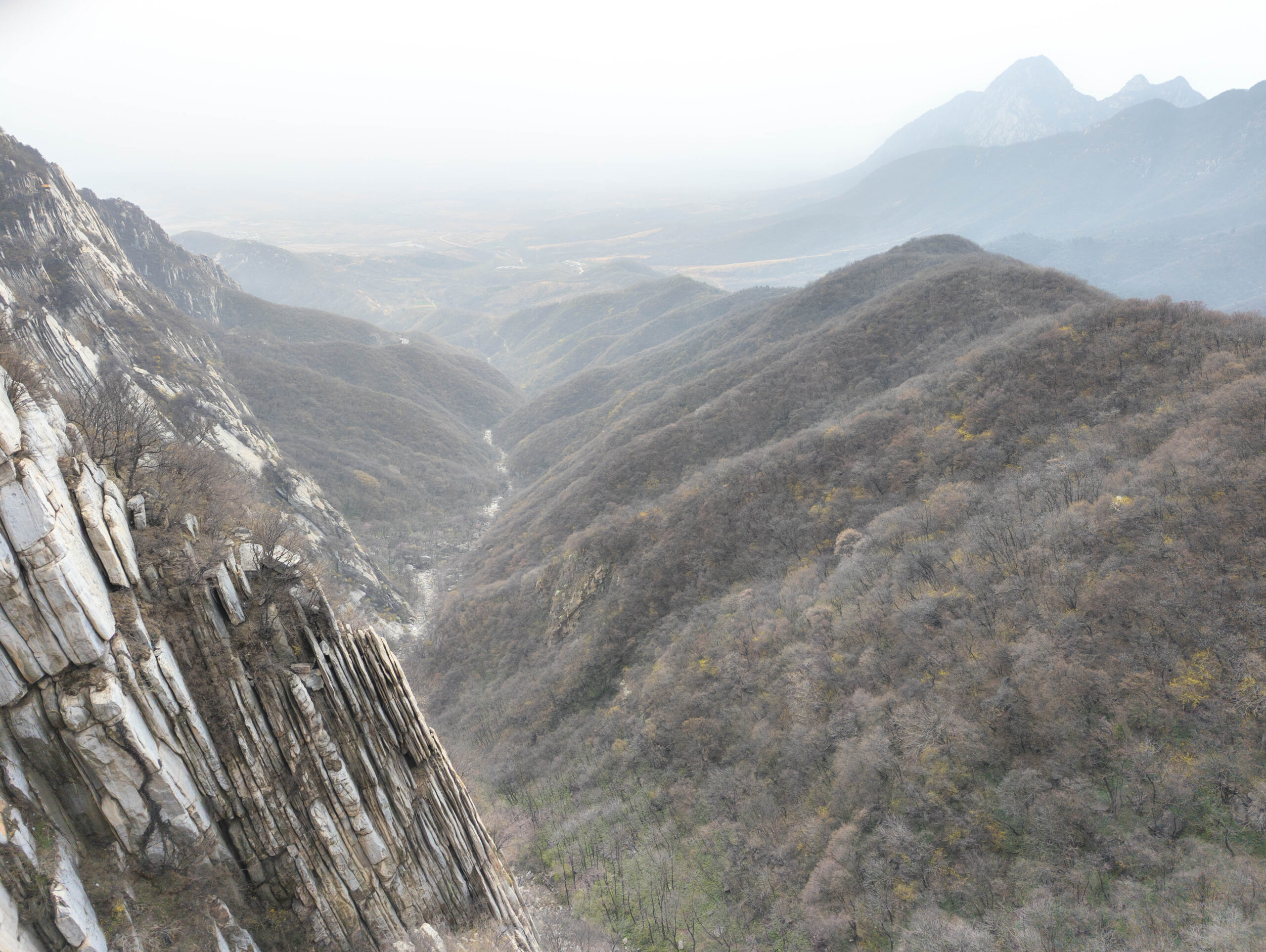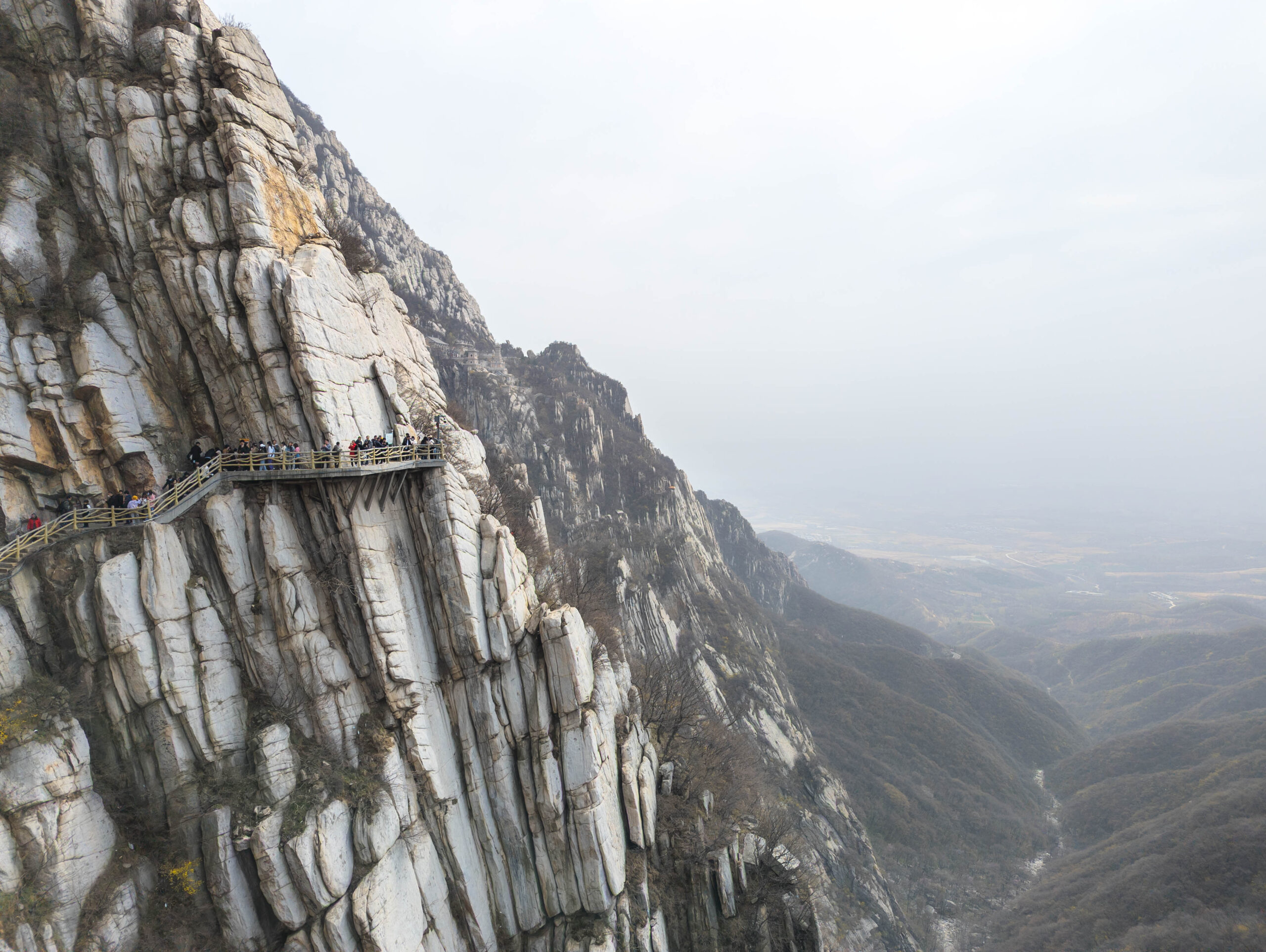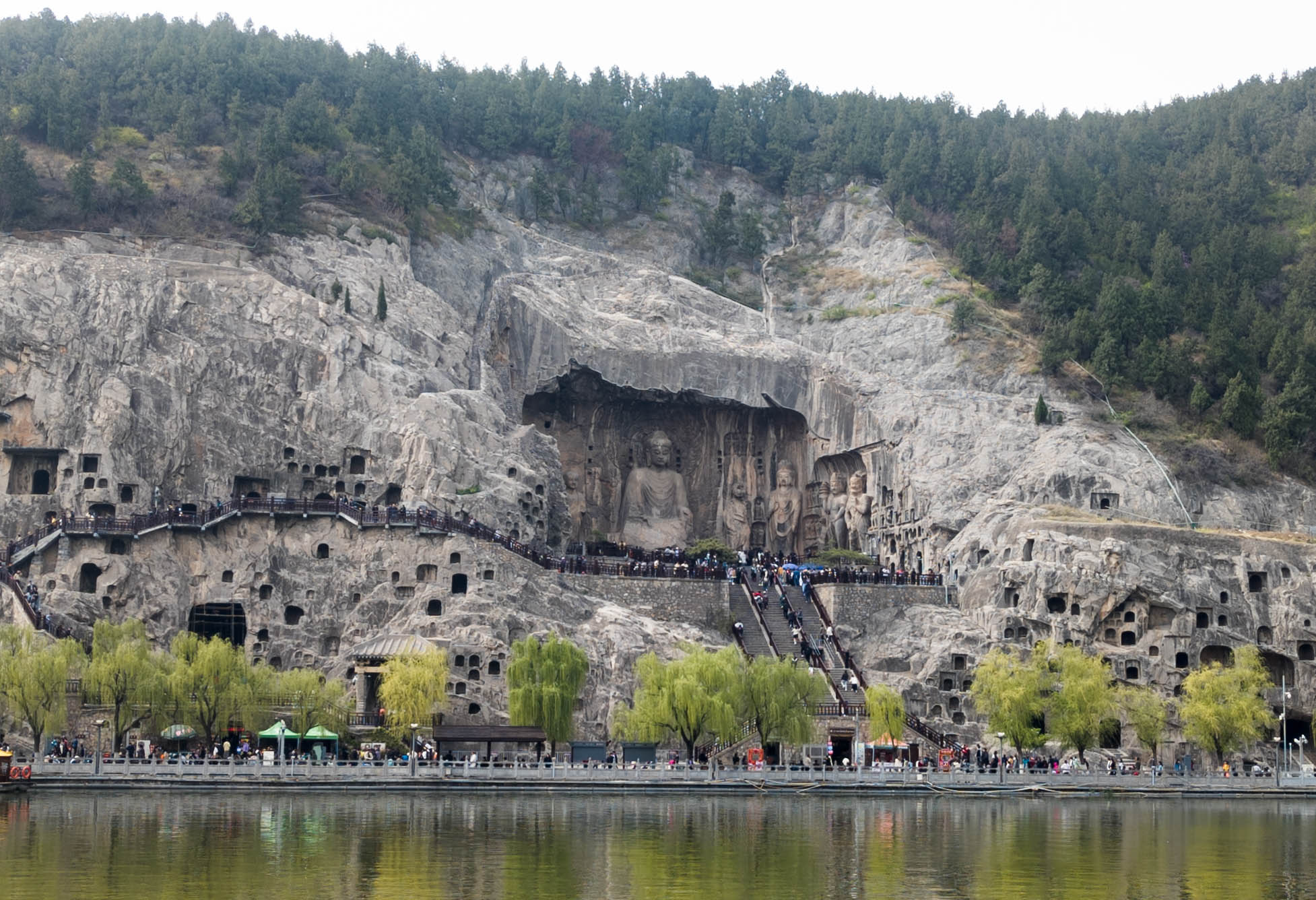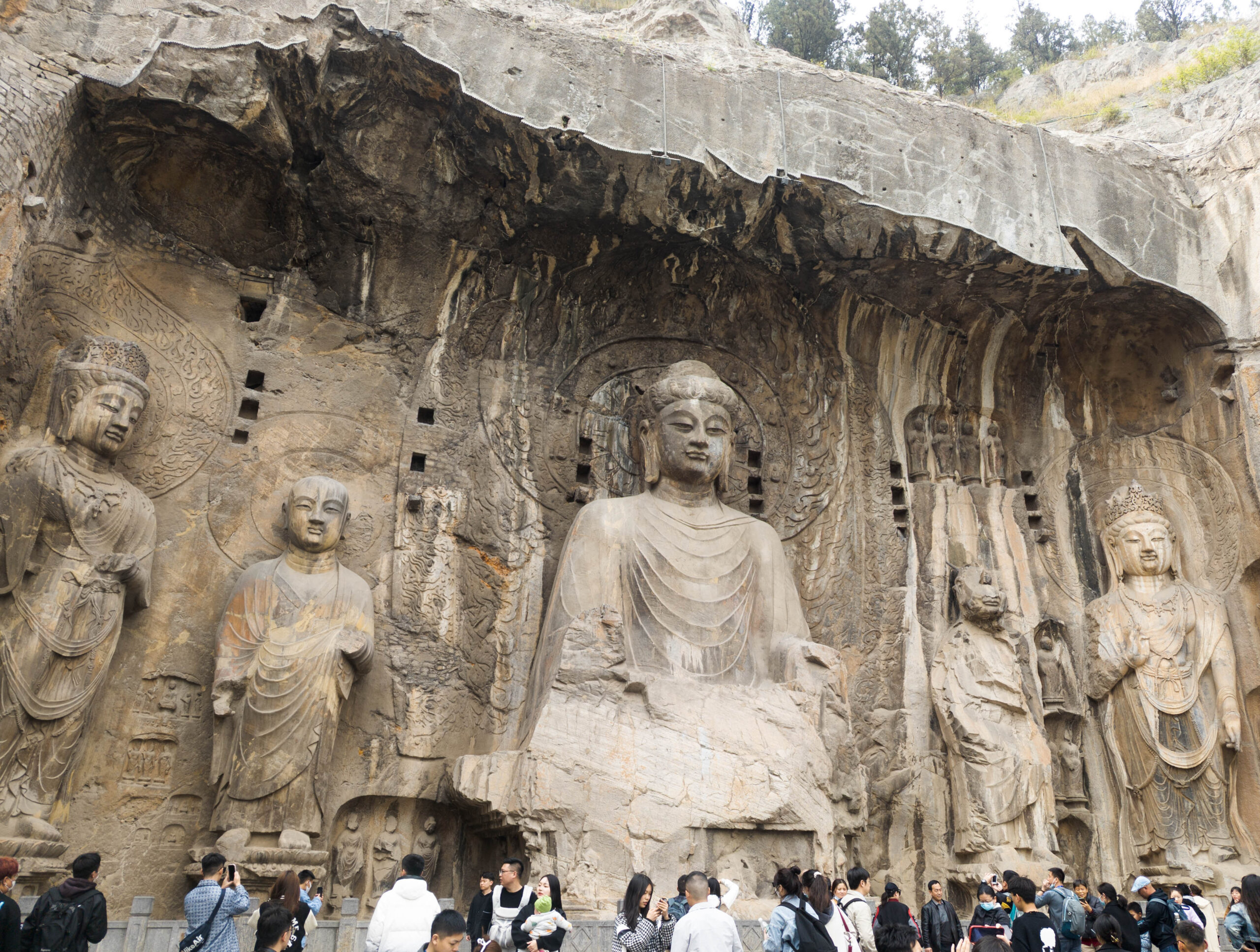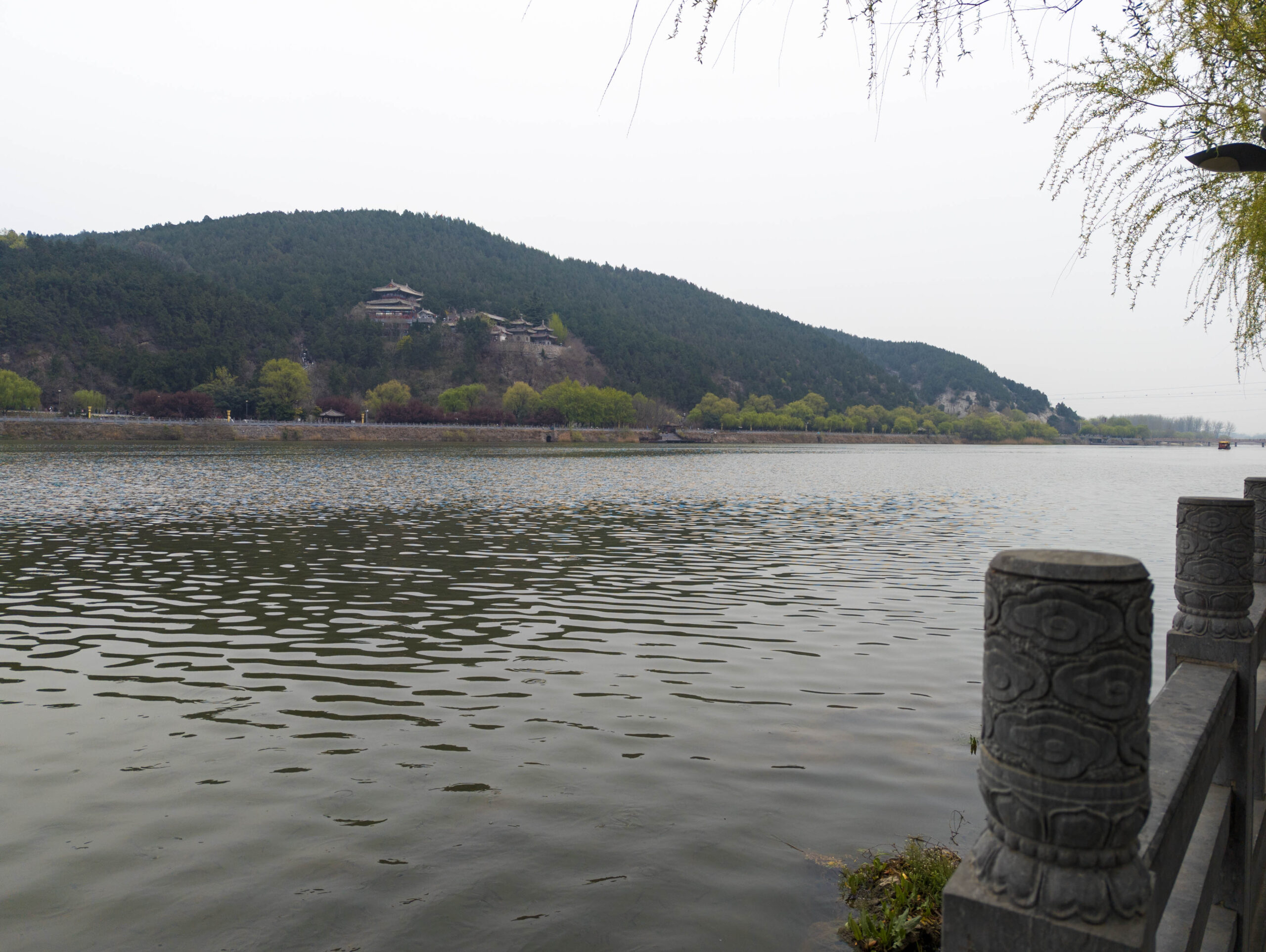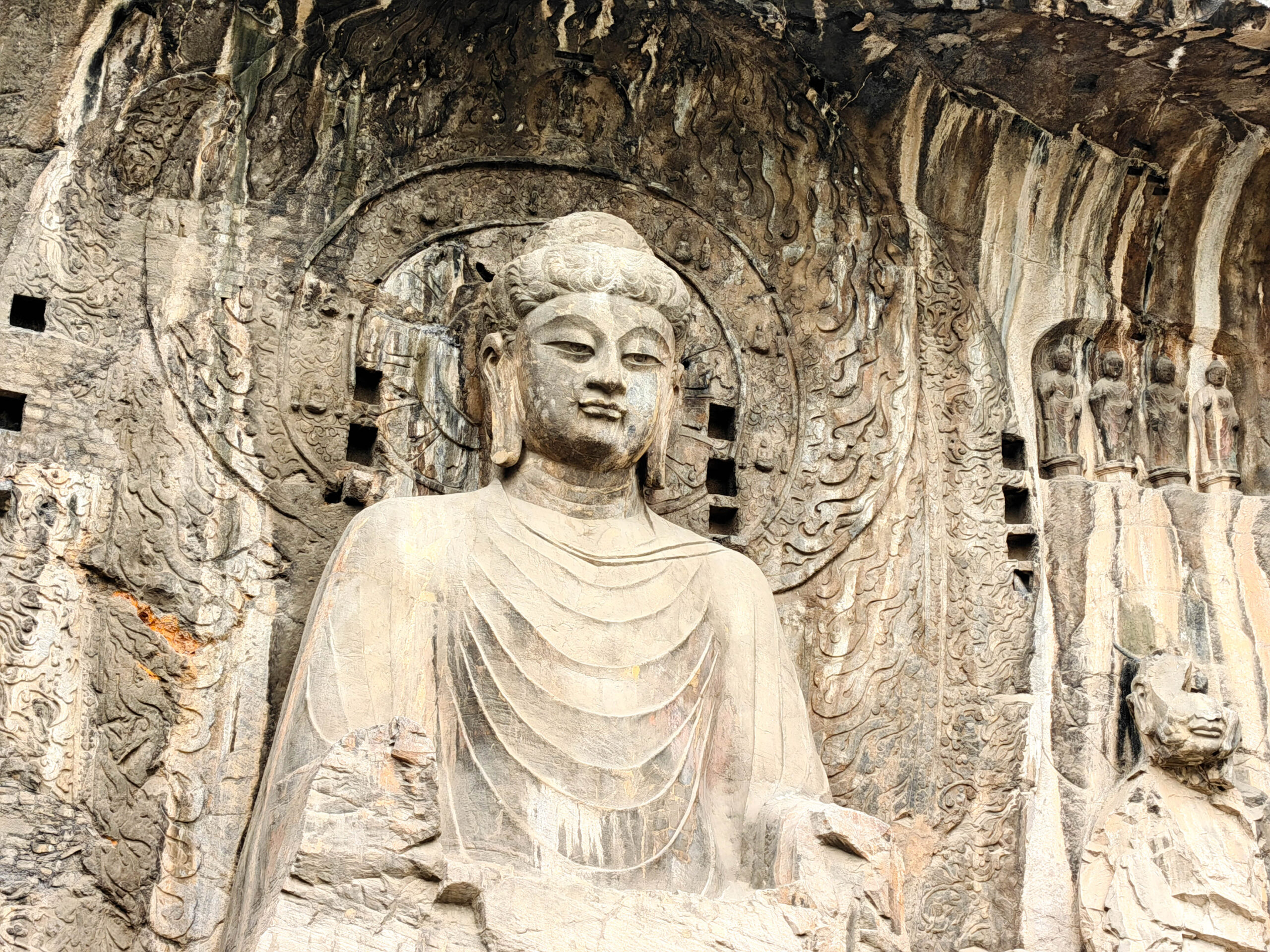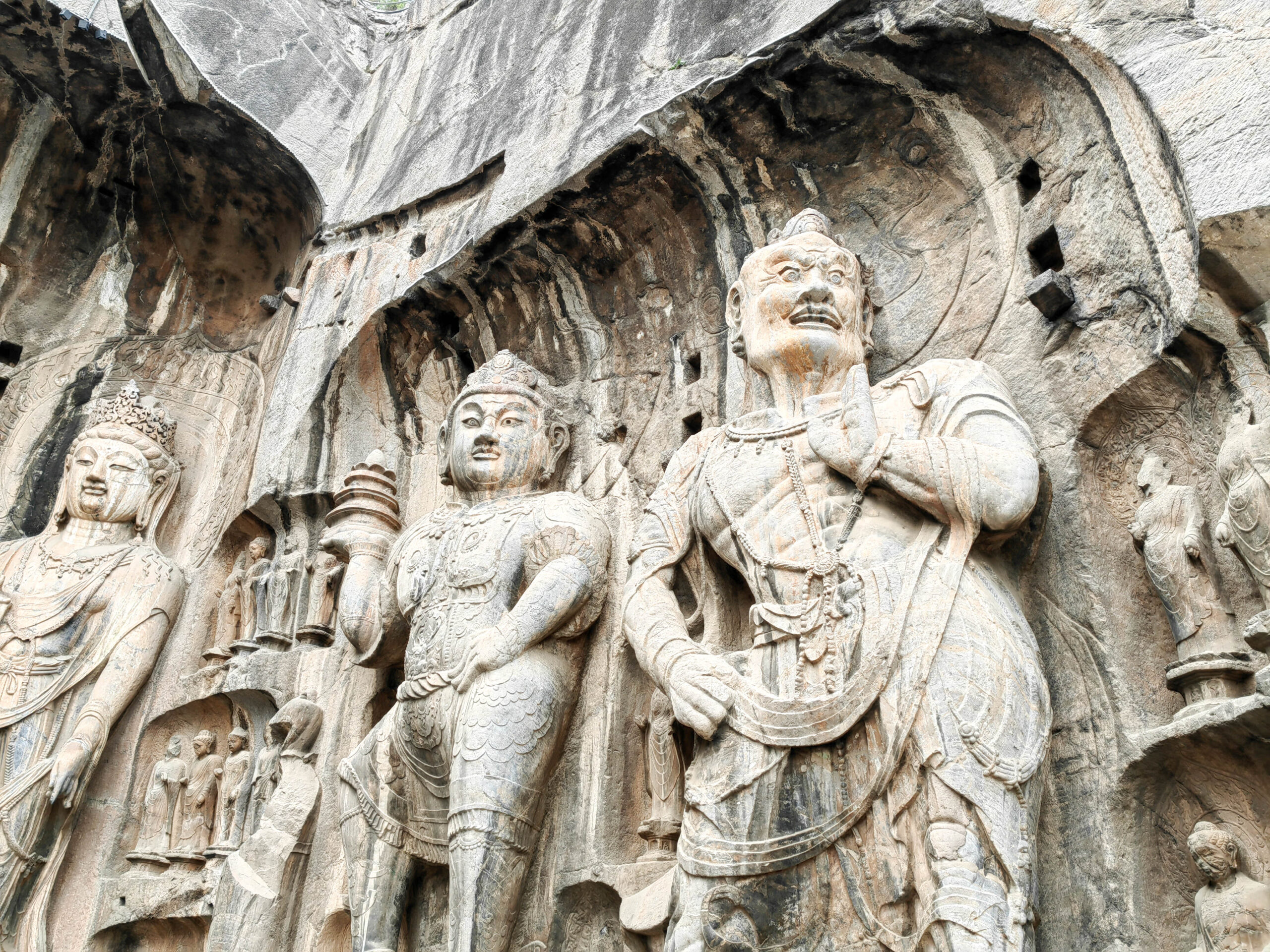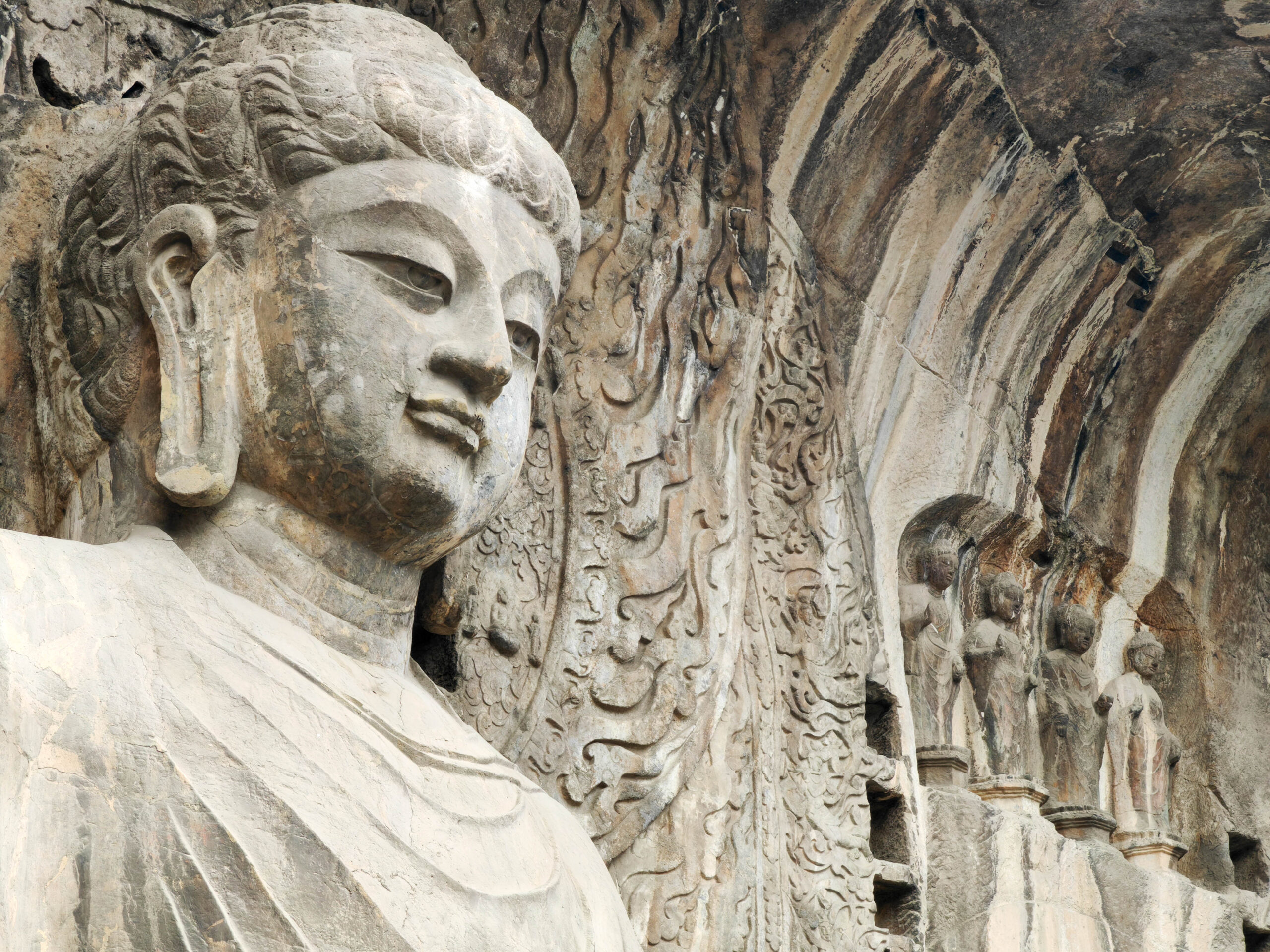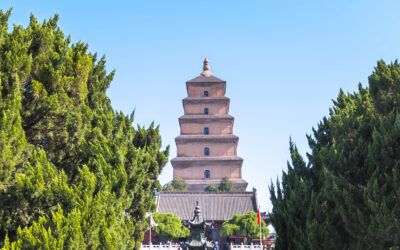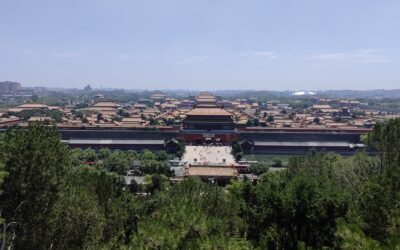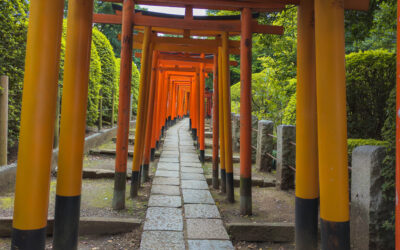Luoyang
March, 2023Shao Lin Temple and the Longmen Grotto
March, 2023
Despite all the nonsense going on at work, I managed to carve out a couple of days to escape Xi’an and see some more of the country.
I didn’t want to go too far, and a quick scan of the map revealed Luoyang, just to the east.
I’d heard of Luoyang thanks to the excellent Fall of Civilizations podcast, in which it was setting for their poetic introduction to the fall of the Han Dynasty. Over the centuries, the city has been the capital for many emperors and empresses, and has seen its fair share of rises and falls.
These days, though, it’s a fairly unremarkable industrial city about an hour and a half on the train from Xi’an. But there are a couple of interesting cultural locations nearby that I thought worth seeing: the Shaolin Temple, of Kung Fu fame, and the Longmen Grottoes: Buddhist statues that date all the way back to the early years of Buddhism in China.
The sleek bullet train from Xi’an arrived on Friday afternoon, and my trips weren’t organized until the following day, so I had a bit of time to explore the city.
Near the hotel was a restored section of the city wall. Elderly people sat in its shade playing cards, and some of them cracking bullwhips, purportedly something that doctors prescribe, to keep them limber. People in Fu Manchu outfits were squatting all about, offering to consult the I Ching.
Through the twin set of double gates, the atmosphere was reminiscent of the Muslim Quarter in Xi’an: vibrant neon signs, and the sounds and aromas of sizzling street food. As I wandered along, I noticed more and more people in traditional clothes. Following the directions on my phone map, I found the park I was looking for, and found the reason for this trend.
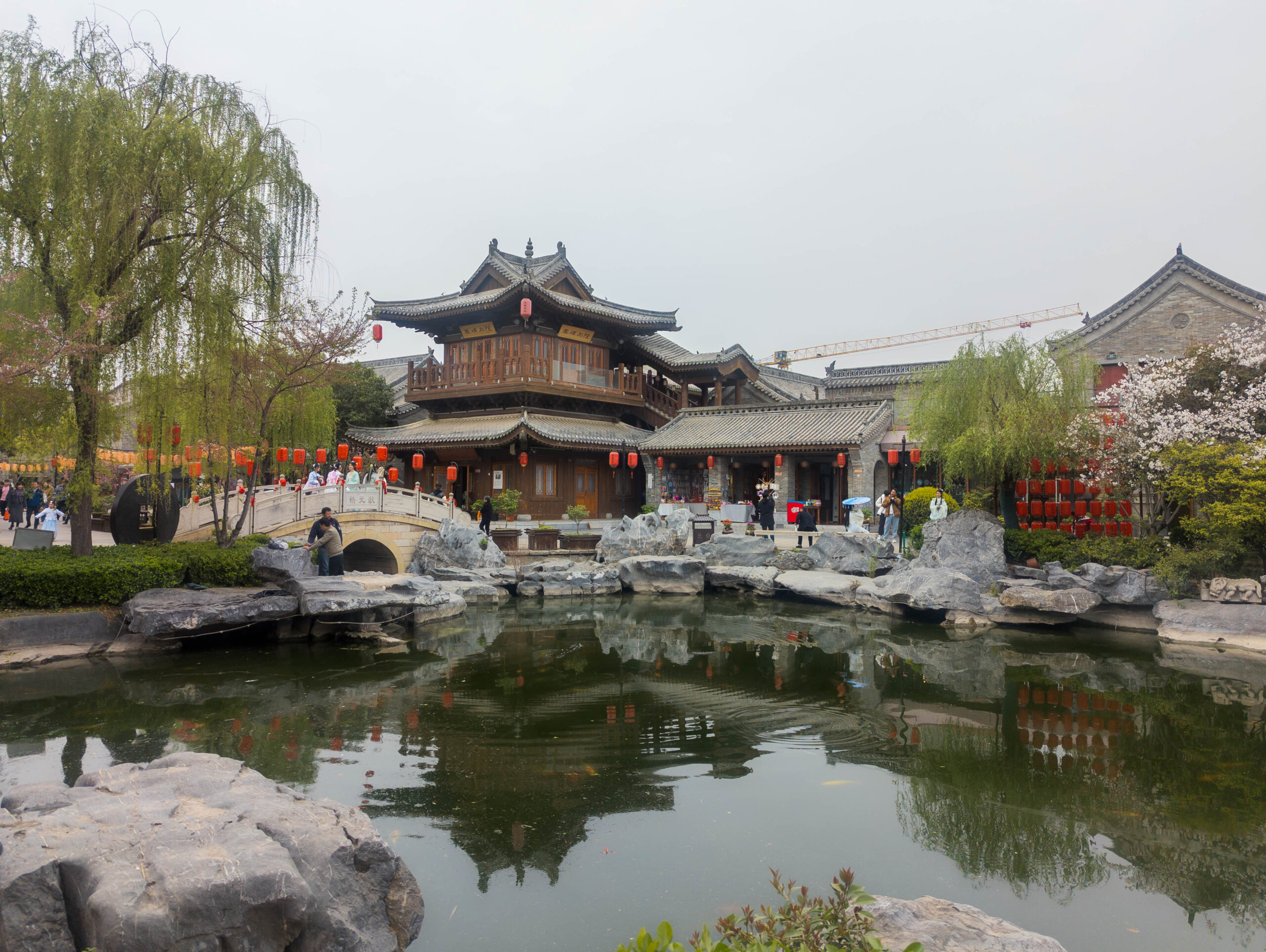
The entire park area had been transformed into a mock Han or Tang-themed attraction (I can never tell the difference), complete with a picturesque carp-filled lake spanned by a charming bridge. Peony flowers surrounded the lake, and at sunset the mood was enhanced with some dry ice floating over the water. Dominating the scene was an authentic pagoda, still bearing scars from the Japanese invasion in the 1940s.
This locale had become a TikTok sensation among young women, who flocked here to dress up in Hanfu attire, capturing photographs of themselves in various meaningful poses, often with their somewhat bored-looking boyfriends in tow.
Hanfu had become a cultural phenomenon in China, actively encouraged by the government due to its association with the continuity with China’s rich history and the patriotic sentiments it evoked.
In fact, much of the local infrastructure catered to this trend, with numerous Hanfu stores lining the adjacent streets. Inside, girls could be seen trying on resplendent pink and gold robes, adorning their hair with pins and tiaras, and enthusiastically capturing selfies.
My favourite shop, though, was a bookstore containing picture books from the Maoist period, along with all kinds of Little Red Book themed memorabilia. I picked up an episode from Journey to the West in pictorial form: Monkey King and his pig-like friend trailing behind their teacher.
The following day, accompanied by a fellow traveler from Shanghai, I made my way to the Shaolin Temple. Although primarily known for its connection to kung fu, the temple was, in fact, a Buddhist temple of significant historical importance, closely associated with Bodhidharma, who introduced Buddhism to China.
The martial arts aspect of it plays a pivotal role in the temple’s modern appeal, with monks traveling abroad to showcase their skills, contributing in its way to China’s soft power and cultural influence. Here on home soil, there were performances throughout the day, featuring monks balancing on two fingers and smashing bamboo weapons against their bare chests, all to the beat of a pounding soundtrack of synthesised Chinese folk ambience.
What took me by surprise were the extensive schools of aspiring monks training on the temple’s playing fields, an awe-inspiring spectacle reminiscent of scenes from “You Only Live Twice.” Hundreds of uniformed trainees executed synchronized kicks and strikes with precision.
However, the Shaolin Temple also remained true to its origins, housing Buddha statues, incense burners, and trees, the latter bearing the scars of holes said to have been punched into them by the fingers of former monks.
Nearby Song Shan mountain, another of China’s Holy Five Peaks, helped to exude an enduring sense of grandeur despite the Disneyfication that prevails at this and many other Chinese tourist hotspots. And among the WeChat QR codes and other anachronisms, the forest of pagodas dedicated to past temple masters imbued the area with a timeless ambiance.
My visit allowed only a brief glimpse of Song Shan itself. Its proximity to the temple, and thus the crowds, meant “hiking” often felt more like shuffling along with the thousands of others on the sole path that led from the cable car station. On a quieter day, perhaps, one could more easily envision the mountain’s former mystique. It was once considered the centre of heaven and Earth in Chinese astrology.
My itinerary concluded with a visit to the Longmen (Dragon Gate) Grottoes, a UNESCO World Heritage site dedicated to Buddhist art. Nestled along the tranquil Yi River, at a site believed to possess particularly auspicious Feng Shui, these grottoes comprise a complex of 1,400 caves hewn into the rock, housing up to 100,000 statues, including a colossal 17-meter-high Buddha.
Many of these sculptures dated back to the Tang Dynasty, and even earlier to the Northern Wei Dynasty. Later, it became a place of pilgrimage for Ming and Qing emperors, with evidence of widened roadways to accommodate the Emperor’s vehicle, sparing him the dangerous climb up the slippery stone steps.
Once again, the sight was spectacular, yet, as so often in China, you had to employ your imagination and strategic camera angles to capture the beauty amidst the heaving crowds.
Luoyang has a long history, and has seen plenty of comings and goings over the centuries as Dynasties rose and fell. Sometimes modern China seems somewhat disconnected from the past, as it forges ahead into its future, but Luoyang’s temples, grottoes and Hanfu shops show that the country hasn’t forgotten where it came from.
Other Trips
Here are some of the other places I’ve been…
2022 Xi’an
The ancient city of Xi’an is now a thriving modern metropolis, but carries reminders of its significant history in its Pagodas and the famous Terracotta Army
2022 Beijing
China’s famous capital has some sights that you’d kick yourself if you ever came here and didn’t see: The Great Wall, The Forbidden City and its Temple of Heaven.
2023 Tokyo
A whistlestop tour to Tokyo, where I failed to see Mount Fuji but accidentally managed to glimpse Godzilla.
